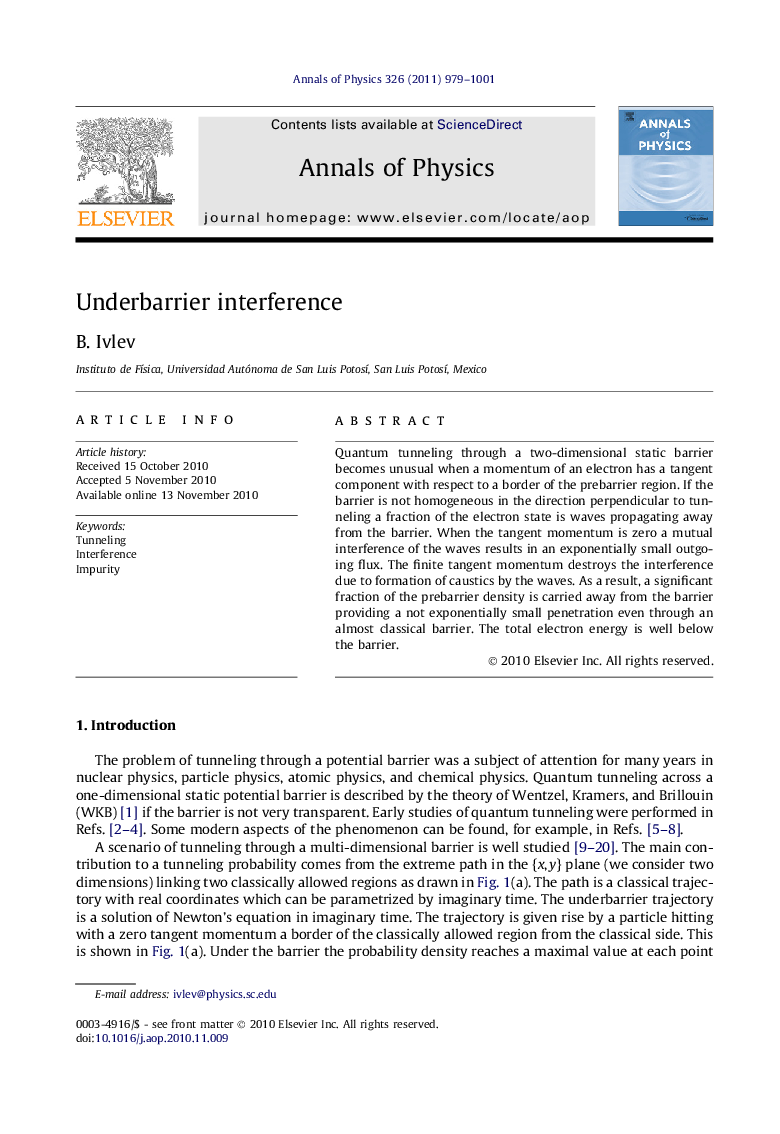| Article ID | Journal | Published Year | Pages | File Type |
|---|---|---|---|---|
| 1856753 | Annals of Physics | 2011 | 23 Pages |
Quantum tunneling through a two-dimensional static barrier becomes unusual when a momentum of an electron has a tangent component with respect to a border of the prebarrier region. If the barrier is not homogeneous in the direction perpendicular to tunneling a fraction of the electron state is waves propagating away from the barrier. When the tangent momentum is zero a mutual interference of the waves results in an exponentially small outgoing flux. The finite tangent momentum destroys the interference due to formation of caustics by the waves. As a result, a significant fraction of the prebarrier density is carried away from the barrier providing a not exponentially small penetration even through an almost classical barrier. The total electron energy is well below the barrier.
Research Highlights► In tunneling a momentum, tangent to a border of the prebarrier region, is important. ► A tangent momentum, transferred under the barrier, is real in contrast to normal one. ► Real momenta lead to caustics points under the barrier where new branches are formed. ► Resulting eigenstate can be not small after the barrier. ► This results in a possibility of penetration through an almost classical barrier.
